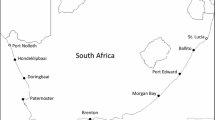Abstract
Species colonizing new deep-sea hydrothermal vents along the East Pacific Rise show a distinct successional sequence: pioneer assemblages dominated by the vestimentiferan tubeworm Tevnia jerichonana being subsequently invaded by another vestimentiferan Riftia pachyptila, and eventually the mussel Bathymodiolus thermophilus. Using a manipulative approach modified from shallow-water ecological studies, we test three alternative hypotheses to explain the initial colonization by T. jerichonana and its subsequent replacement by R. pachyptila. We show that R. pachyptila and another vestimentiferan, Oasisia alvinae, colonized new surfaces only if the surfaces also were colonized by T. jerichonana. This pattern does not appear to be due to restricted habitat tolerances or inferior dispersal capabilities of R. pachyptila and O. alvinae, and we argue the alternative explanation that T. jerichonana facilitates the settlement of the other two species and is eventually outcompeted by R. pachyptila. Unlike the classic model of community succession, in which facilitating species promote their own demise by modifying the environment to make it more hospitable for competitors, we suggest that T. jerichonana may produce a chemical substance that induces settlement of these competitors. This process of selecting habitat based on biogenic cues may be especially adaptive and widespread among later-successional species that occupy a physically variable and unpredictable environment. In these cases, the presence of weedy species implies some integrated period of environmental suitability, whereas an instantaneous assessment of physical habitat conditions, such as water temperature for vent tubeworms, provides a poorer predictor of long-term habitat suitability.
Similar content being viewed by others
Author information
Authors and Affiliations
Additional information
Received: 13 July 1999 / Accepted: 2 November 1999
Rights and permissions
About this article
Cite this article
Mullineaux, L., Fisher, C., Peterson, C. et al. Tubeworm succession at hydrothermal vents: use of biogenic cues to reduce habitat selection error?. Oecologia 123, 275–284 (2000). https://doi.org/10.1007/s004420051014
Issue Date:
DOI: https://doi.org/10.1007/s004420051014




